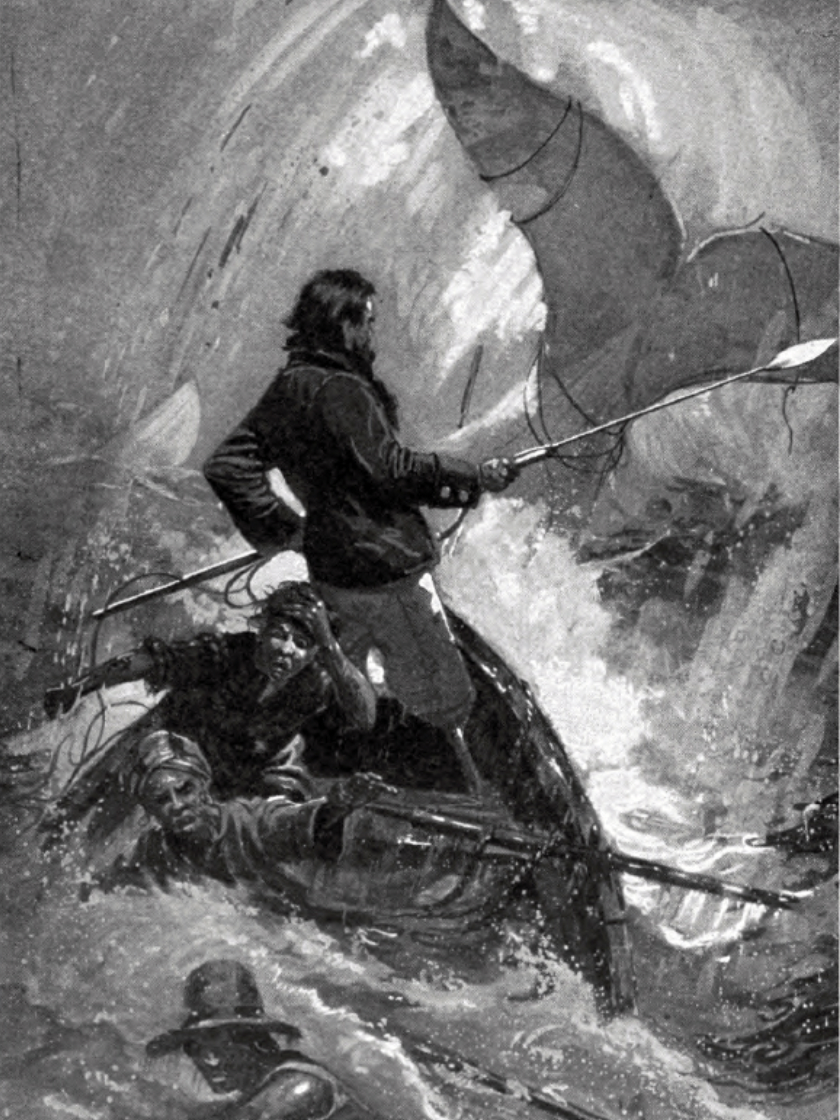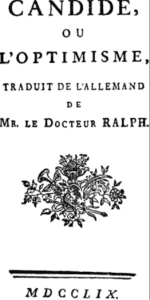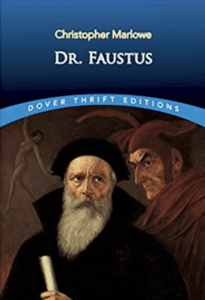Author: Herman Melville, a 19th-century American novelist of the American Renaissance period
This unique novel written in mid-nineteenth century America has since captured the world’s imagination with its fascinating descriptions of whales and the whaling industry of the time, and particularly the obsession of one whale-ship captain with an albino monster of a whale – the titular Moby-Dick. Though not scientifically accurate, it furnishes information about the classification, anatomy, habitat, behavior, and legends of whales, while commenting on human nature, religion, race, cultural diversity, and literature.
Notwithstanding the novel’s famous first line: “Call me Ishmael”, Ishmael being the first person narrator, there is also a third person omniscient voice, soliloquies by many characters, and some scenes with stage directions. Ishmael travels to New Bedford to become a sailor in a whaling ship. At the crowded inn owned by the ominously named Peter Coffin, he shares the room and bed of Queequeg. Though initially afraid of the dark-skinned tattooed cannibal, Queequeg, Ishmael soon becomes friendly with him. Son of the High Chief of his tribe, Queequeg is a harpooneer.
After attending a sermon about Jonah and the whale by ex-harpooner Father Mapple from a pulpit shaped like a ship’s bow in the whalemen’s chapel full of tombstones of sailors lost at sea, they take a schooner to Nantucket staying at Try Pots Inn famous for chowder, named after the pots in which blubber is melted on a whale-ship. While inexperienced Ishmael is hired for three hundredth lay, or three-hundredths part of the profits by overtly religious but shrewd owners of the ship Pequod, skilled harpooner Queequeg gets the ninetieth lay.
Before sailing, they meet a pock-marked mysterious man. Calling himself Elijah after the prophet who warned the Biblical king Ahab, he speaks about Captain Ahab losing his leg to a sperm whale on his last voyage and having a fit. The mates get the ship started on the long voyage while the captain remains in his quarters unseen.
Pequod’s diverse crew is from all around the world. Queequeg is harpooner to god-fearing first mate Starbuck. Efficient and jovial second mate Stubb’s harpooner is Tashtego, an ethnic Indian from Martha’s Vineyard. Short and stout third mate Flask, also from Martha’s Vineyard, nicknamed King-post after the square block of timber used by Arctic whalers, leads African savage harpooner Daggoo. Each mate heads one of Pequod’s boats when a whale is sighted, carrying a sharp spear to finish off the whale his harpooner strikes.
Ahab first appears on quarter-deck several months later. Holes are bored on Pequod’s deck for pacing with his whalebone peg-leg. A livid white rod-like mark stretches from Ahab’s hair down the right side of his face and neck. His erect posture and determinate expression suggests unflinching firmness of purpose. The crew soon finds out Ahab’s singular object is hunting and killing the White Whale which took off his leg, called Moby-Dick. Ahab nails a Spanish gold doubloon to the mast for the first person to spot Moby-Dick.
Consulting nautical charts with knowledge of seasonal location of whales, and inquiring from passing ships about sightings, Ahab tracks Moby-Dick, easily recognized by a distinct white and puckered skin with battle-scars. Moby-Dick has a fierce reputation, to whom the captain of the passing Samuel Enderby has lost his arm, determined never to hunt Moby-Dick again. In contrast, Ahab lusts for revenge on a creature who merely retaliates instinctively when his life is threatened. Ahab forges a barb from his razors tempering it with three harpooner’s blood for Moby-Dick.
Ishmael details life on a whaling ship. Pequod sails killing sperm whales and extracting spermaceti. There are lengthy accounts of the process involved, and the different roles of the crew. There are many portents of disaster. Starbuck’s boat is lost in a mist at the first whale hunt, destroyed when Pequod runs into it. A lookout falls from the mast disappearing without a trace. When young black genial tambourine-playing ship-keeper Pip is taken out on a boat, he jumps frightened into the water and is accidentally abandoned, losing his mind. Idiot Pip speaks wisely and philosophically like Shakespeare’s jesters.
The Asian sailors Ishmael saw before boarding are Ahab’s secret boat crew led by white-turbaned Fedallah, who cryptically foretells Ahab’s death. Lunatic Gabriel aboard the quarantined ship Jeroboam shouts prophecies of death and destruction to Ahab. When Tashtego falls inside the gigantic suspended oily head of a killed whale and Daggoo dangerously hangs with it, Queequeg dives in and rescues them. Queequeg imagines he is dying when ill, having a coffin made like a Nantucket canoe, used as a life buoy once Queequeg recovers.
When Moby-Dick is finally spotted with the cry, “There she blows!”, all boats except Starbuck’s are lowered. Moby Dick bites Ahab’s boat in half, Ahab is rescued by Stubb’s boat. This does not deter Ahab, who promises his crew a large reward if Moby-Dick is killed. On the second day, Moby-Dick pulls the tangled ropes of Stubb’s and Flask’s boats and sinks them, dragging Fedallah under. Ahab’s whalebone leg is smashed to a splinter.
Monomaniac Ahab does not heed these two warnings, Starbuck lamenting at his blasphemy. On the third day of the hunt, Ahab sees the corpse of Fedallah lashed on the whale’s back with the harpoon lines as Ahab chases Moby-Dick, and understands the prophesy that Fedallah will go before him. Ahab was to see two hearses before he dies, and Moby-Dick is the first hearse bearing Fedallah, while the second hearse is Pequod itself, which Moby-Dick proceeds to sink. Ahab is caught around the neck by a darting harpoon, strangulated by hemp as foretold.
The whale and the sinking ship create a vortex pulling everything in. Ishmael is the sole survivor thrown far from the whirlpool, keeping afloat using Queequeg’s coffin life-buoy which floated up owing to its great buoyancy. He is picked up by the ship Rachel, searching the seas for its boat containing the captain’s son, which had been lost chasing Moby Dick some days back.




